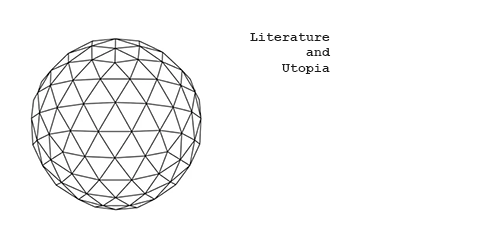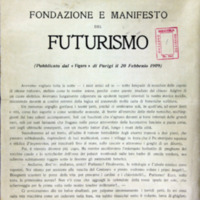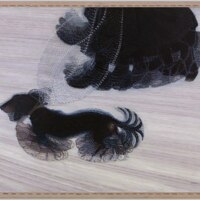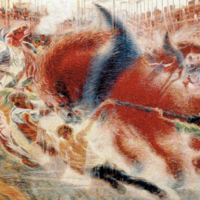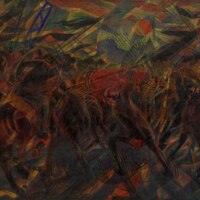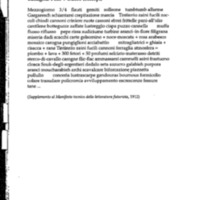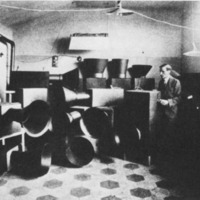Italian Futurism
Dublin Core
Title
Italian Futurism
Contributor
Blake Benson, Tucker Bryant, Summer Porter, Whitney Skidmore
Collection Items
The Founding and Manifesto of Futurism
F.T. Marinetti’s Founding and Manifesto of Futurism served as the spark for the Futurist movement, a movement which was an “incendiary device, upholding the new values of speed, destruction, and violence necessary for a new age of Italian national…
Firenze Santa Maria Novella Railway Station
The Firenze Santa Maria Novella Railway Station was constructed in 1934 by the Italian fascist government. It was designed by a group of architects known as the “Gruppo Tuscano” and was built under the constriction that it be the “most inconspicuous,…
Dynamism of a Dog on a Leash
The Italian Futurist painter, Giacomo Balla, painted on canvas Dynamism of a Dog on a Leash (1912), a piece that became one of the most recognizable art works from the Futurist movement. The painting portrays a woman walking a dachshund on a leash.…
The City Rises
The City Rises composes all dominant motives of the Italian Futurist movement onto one canvas. Boccioni is showing the ongoing construction of a power plant in Milan, Italy while hounding the “speed and movement” (wallector.com) tropes of Futurism.…
Funeral of the Anarchist Galli
With Milan being the Italian hub for industrialization in the late 1800s/early 1900s, the death of anarchist Angelo Galli sparked political conflict between the anarchists and the police. Angelo Galli was stabbed to death by factory security guards…
Excerpt of “Battle: Weight + Odour" Poem
F. T. Marinetti -the founder of Italian Futurism- declared the necessity of “liberat[ing] words” in his 1912 Technical Manifesto of Futurist Literature (Rainey). He asserts the importance of breaking from past literary tradition with the new idea of…
The Manifesto of Futurist Cooking
In 1932, Filippo Marinetti published The Manifesto of Futurist Cooking to expand the Italian Futurist’s movement into cooking and food. In this work, Marinetti notes, “Against practicality we Futurists therefore disdain the example and admonition of…
Intonarumori
Luigi Russolo created the intonarumori between 1913 and 1921 amidst the rise of Futurism in Italy (“The Original Noise Artist”). These are a series of “boxes of various colors and sizes, each with an impressive horn protruding from its front”…
